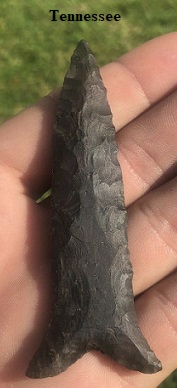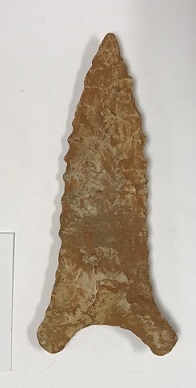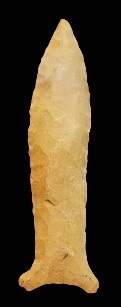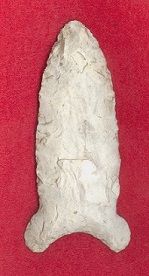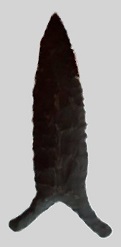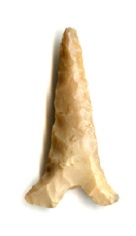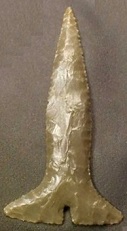Other Websites with Detailed Information:
Name Details:
Named By: James W. Cambron
Named For: Type Site location
Date Identified: 1955
Type Site: Stone Pipe Site, Wheeler Valley, Limestone County, Alabama
Wheeler Expanded
Cluster:
Commonly Utilized Material:
Date:
Cultural Period:
10,000 - 8,500 B.P.
Transitional Paleo
Early Holocene
Glacial Period:
Culture:
Outline is Representative of Common Size and Shape:
Description of Physical Characteristics and Flaking Pattern:
This is a thin small to
medium lanceolate point with a flattened to elliptical point. The blade is narrow and recurvate, excurvate becoming parallel at the hafting region and flaring back out
at the basal edge. The base is most commonly deeply concave, but many examples have a straight base with a center notch. Grinding on the basal edge and hafting region may occasionally be seen, but is primarily absent. The flaking pattern may vary from collateral to random.
Size Measurements: Total Length - 40 to
90 mm, Blade Width - 10 to 20 mm, Basal Width - 15 to 30 mm
Distribution:
Distribution Comments:
This point is primarily found in Tennessee River Valley and it's watersheds. This point may be found with decreased frequency into the Gulf Coastal region.
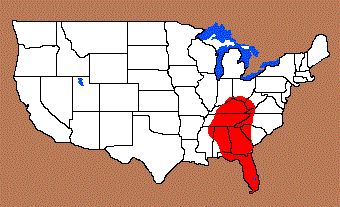
Additional Comments:
This point is similar to the McKean point found on the Plains region (Cambron reports being found into Alabama), except that this point is older and the
basal edge is steeply beveled (Cambron 1975).
Other points in this Cluster:
Point Validity: Valid Type
Cambron is a distinguished
avocational archaeologist that did extensive work in Alabama and the Tennessee River valley. This point was named in a personally published book. This point has been
referred to in numerous professional publications and is considered a valid type.
.
Age Details:
References: (See Reference Page, Entry Number):
12, 23, 30
Wheeler Expanded Projectile Point, Wheeler Expanded Arrowhead
